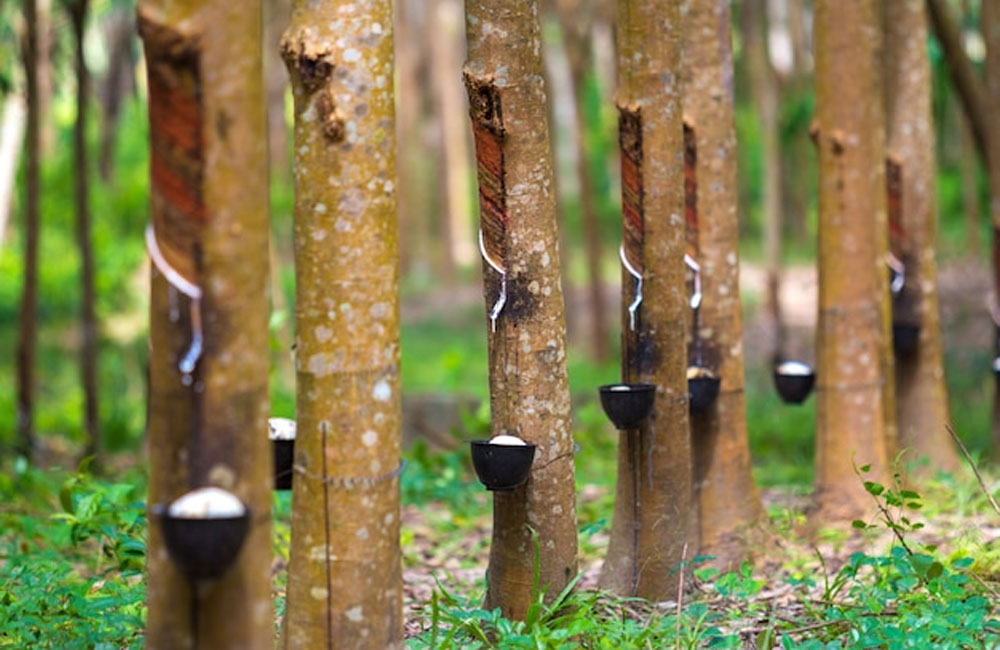Sri Lanka’s rubber industry has entered a critical phase, driven by new rules from the European Union Deforestation Regulation (EUDR) and a government-led mapping initiative aimed at smallholder lands. The government recently approved a national programme to digitally map and register rubber plantations using GIS technology and QR codes, with the goal of meeting traceability requirements for exports into the EU.
Under the initiative spearheaded by the Rubber Development Department and the Survey Department of Sri Lanka, all smallholder rubber holdings must be geocoded, registered and assigned a unique QR code. That code links each plot to ownership, planting data and verification of land use. The mapping is scheduled for completion by end-2025.
The urgency stems from the EUDR, which from 2025 onwards will only allow rubber and rubber-based products into the EU if production can be proven “deforestation-free” and fully traceable to the plot.
But Sri Lanka’s rubber sector faces headwinds. Output has fallen sharply, with natural rubber production expected to come in at around 60 million kg in 2023 a drop of 15 % compared with the prior year due to disease, fertiliser shortages and ageing plantations.
Meanwhile, the industry, which employs over 150,000 tappers across smallholder estates, is under pressure from diminishing yields and rising global competition.
The mapping initiative could therefore serve as a lifeline: compliance would protect market access, while failure risks exclusion and export losses. A recent report estimated that two-thirds (68 %) of the roughly 98,000 ha of rubber land is under smallholder control many of whom currently operate without formal titles or digital documentation.
From a financial perspective, the stakes are material. Sri Lanka’s rubber product exports in 2024 reached roughly USD 1 billion, with a target to double to USD 2 billion by 2030.
Any disruption to EU supply chains due to EUDR non-compliance could trigger sharp revenue declines, denting foreign-exchange earnings and jeopardising rural incomes. Consider: if even 10 % of exports are blocked or face higher compliance costs, that could translate into losses of USD 100 million or more; for smallholders and downstream processors working on thin margins, the ripple effect is significant.
Yet implementation risks loom. On-the-ground, mapping progress is described as slow, with rural connectivity weak, human-resource shortages acute and manual record-keeping still common.
Economists argue that ineffective compliance could lead to higher verification costs, delayed shipments and long-term damage to Sri Lanka’s export reputation. “Without full compliance, Sri Lanka risks even greater export losses, product rejections, and long-term market damage,” one policy study warns.
Governance matters too. Successfully registering tens of thousands of small-scale growers demands strong institutional coordination, digital infrastructure, farmer training and credible audit trails. In that sense, the mapping initiative is not just about land-registration—it is about reviving the entire rubber value-chain with sustainability and resilience at its core.
In conclusion, Sri Lanka’s push to map smallholder rubber lands under the EUDR framework is a timely but challenging endeavour. If executed well, it could unlock sustained export earnings, protect rural livelihoods and modernise the sector. If not, the consequences could be harsh: lost markets, contracting production and livelihoods at stake. As the 2025 deadline looms, the rubber industry is racing to prove that it can rise to the global environmental bar and the clock is ticking.

Leave your comments
Login to post a comment
Post comment as a guest